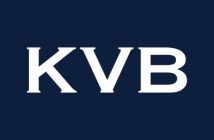Highlights of FY23/24 Results
- For the financial year ended 31 March 2024, total sales amounted to US$3,814 million – an increase of 5% compared to the prior year
- Gross profit totalled US$851 million – an increase of 19%
- EBITA, adjusted to exclude non-cash foreign exchange rate movements and restructuring charges, increased by 56% to US$343 million or 9.0% of sales (compared to 6.0% of sales in FY22/23)
- Net profit attributable to shareholders totalled US$229 million – an increase of 45% compared to the prior year
- Underlying net profit, adjusted to exclude non-cash foreign exchange rate movements and restructuring charges, totalled US$252 million – an increase of 70%
- Free cash flow from operations totalled US$422 million compared to US$215 million in the prior year
- A recommended final dividend of 44 HK cents per share (5.64 US cents), which combined with the interim dividend paid, will amount to a 20% increase compared to total dividends declared for the prior year
- As of 31 March 2024, cash reserves amounted to US$810 million and the ratio of total debt to capital at year end was 18%
HONG KONG SAR – Media OutReach Newswire – 16 May 2024 – Johnson Electric Holdings Limited (“Johnson Electric”), a global leader in electric motors and motion subsystems, today announced its results for the twelve months ended 31 March 2024.
Group sales for the 2023/24 financial year totalled US$3,814 million, an increase of 5% compared to the prior year. Net profit attributable to shareholders increased by 45% to US$229 million or 24.71 US cents per share on a fully diluted basis. Underlying net profit, adjusted to exclude non-cash foreign exchange rate movements and restructuring charges, increased by 70% to US$252 million.
Sales Performance
The Automotive Products Group (“APG”), Johnson Electric’s largest operating division, achieved sales of US$3,210 million – an increase of 10% on a constant currency basis. The global automotive sector experienced unusually strong volume growth in the first half of the financial year, largely due to pent up consumer demand for new cars caused by almost three years of severe supply constraints. During the second half of the year, demand growth slowed as supply pressures eased and the effects of higher vehicle prices and financing costs became the predominant factors shaping the market. Nonetheless, over the course of the year, APG continued to maintain above-market sales growth rates due to a product portfolio that is closely aligned with the key long-term technology trends transforming the industry.
APG’s sales strength extended across every major geographic region. In Asia-Pacific, sales increased by 10% on a constant currency basis compared to the region’s light vehicle production volume growth of approximately 8%. In the Americas, constant-currency sales grew by 9% compared to an estimated 6% rise in vehicle production. And in EMEA, APG’s constant-currency sales increased by 13% compared to an estimated 7% increase in vehicle production.
While specific market dynamics vary by region, the common and most important structural trend driving automotive industry demand is electrification. Presently, one in every three new cars sold globally is either a battery-electric or hybrid-electric powered vehicle – up from one in twelve cars only five years ago. It remains to be seen how fast the pace of electrification evolves from here with multiple factors expected to interplay in determining consumer demand and OEM vehicle production strategies. Among these factors are the continued expansion of charging infrastructure, improvements in vehicle driving range, battery supply chain development, electric vehicle pricing relative to alternatives, and the policy stances of national governments.
From a product and technology perspective, APG is strongly positioned to benefit from the changes impacting the industry as it transitions away from the internal combustion engine. On the one hand, a majority of our motion products and subsystems are independent of which type of propulsion mechanism drives a vehicle – with every vehicle requiring an array of closing, opening, locking, adjusting, heating, cooling, and lubricating applications that depend on our electric motors, actuators, solenoids, switches, valves, and pump technologies. On the other hand, the development of the next generation of electric and hybrid vehicles is presenting OEMs with a host of new design and technical challenges that APG is uniquely well-placed to solve. One example of APG’s motion technology leadership is a highly advanced integrated thermal management system that combine motors, valves, and pumps – and functions as a key enabler for EVs to simultaneously optimise battery performance and cabin temperature. Another exciting growth opportunity is in the area of enhanced passenger comfort and safety, with vehicle cabins expected to undergo significant design changes to feature different seating configurations, steering column adjustments, and new door entry / exit systems.
In contrast to APG, the Industry Products Group (IPG) – contributing 16% of total Group sales – experienced a more difficult year. The division’s sales were US$604 million which, excluding the effects of currency movements and an acquisition in the prior year, represented a decline of 19%. As has been previously reported, IPG has been enduring a period of weaker sales due to the combination of the highly unusual post-pandemic effects on consumer expenditure and channel inventory levels, as well as reduced overall consumer confidence in the face of sharply higher interest rates and inflation.
Management has been responding to these near-term headwinds by cost rationalisation and streamlining operating processes, including greater use of automation and digital tools. Equally important has been the necessity to revisit assumptions related to priority industrial and consumer product applications and reallocate resources accordingly.
While it has been tough to call the bottom of IPG’s recent sales downturn, there are increasing indications that contract manufacturers and distribution channels are now looking to replenish inventories – though the path to a full recovery is constrained by lacklustre macro-economic conditions in most major geographies. The medium-term growth potential for IPG continues to be attractive given the proliferation of motion and electrification-enabling technologies in an increasing range of product applications spanning medical devices, lawn and garden equipment, electric bikes, warehouse automation, ventilation and heating, smart home products, and numerous other industrial applications.
Gross Margins and Operating Profitability
The Group’s gross profit amounted to US$851 million – an increase of 19% compared to the prior year and, as a percentage of sales, represented an increase from 19.6% to 22.3%. The improvement of gross margins was primarily due to sales volume growth, pricing, lower raw material and freight costs, and reductions in direct labour that were partially offset by higher utility expenses.
Reported earnings before interest, tax and amortization (“EBITA”) amounted to US$315 million (compared to US$232 million in the prior year). EBITA adjusted to exclude non-cash foreign exchange rate movements and restructuring charges, amounted to US$343 million or 9.0% of sales (compared to 6.0% of sales in the prior year).
Net Profit and Financial Condition
Net profit attributable to shareholders increased by 45% to US$229 million or 24.71 US cents per share on a fully diluted basis. Underlying net profit, adjusted to exclude non-cash foreign exchange rate movements and restructuring charges, amounted to US$252 million compared to US$148 million in the prior year.
Cash generation has also continued to improve with free cash from operations for the financial year totalling US$422 million. As a consequence, the Group’s overall financial condition is robust with a total debt to capital ratio of 18% and year-end cash reserves of US$810 million.
Dividends
The Board has recommended increasing the final dividend to 44 HK cents (5.64 US cents) per share, which together with the interim dividend of 17 HK cents, represents a total dividend of 61 HK cents (7.82 US cents) per share – a 20% increase in total dividends for the year. The final dividend will be payable in cash.
After a thorough review of its financial status and anticipated capital needs, the Board has concluded that the Company will discontinue offering a scrip alternative for the dividend. This change will take effect starting with the final dividend for the fiscal year 23/24.
Business Model Development
Management remains focused on adapting Johnson Electric’s business model to capture the substantial growth opportunities inherent in our target markets and, at the same time, ensure that we are building sufficient resiliency to withstand unforeseen disruptions and economic downturns in the locations where we operate. Central to this model is the development of large-scale, low-cost production hubs in the three major geographies of Asia, Europe, and the Americas.
Across our manufacturing operations and business support functions, we are continuing to increase the use of advanced digital tools and processes. This includes adopting and advancing the use of Artificial Intelligence software to enhance decision-making and operational efficiency – with extensive training for our employees on AI’s applicability to their specific areas of work.
One example of the promising opportunities arising from the rapid acceleration in AI applications is Qualisense, a joint-venture that Johnson Electric formed in Israel in 2021 to develop AI-driven quality assurance software for industrial automation processes. Successful pilot projects on production lines in our own factories in China and Canada have created the foundations not only for significant quality and efficiency improvements internally, but are now leading to growing commercial interest from several major third-party manufacturers.
Chairman’s Comments on the Annual Results and Outlook
Commenting on the annual results for the financial year 2023/24, Dr. Patrick Wang, Chairman and Chief Executive, said, “For the financial year 2023/24, Johnson Electric delivered commendable results in relatively subdued macro-economic conditions impacted by high interest rates and geopolitical instability. Significant progress was achieved in containing costs, improving operating efficiencies, and making pricing adjustments to recover inflationary effects that had hampered financial performance in the aftermath of the COVID-19 pandemic. As a result, the Group has been able to restore its profitability close to the levels achieved immediately prior to the pandemic and with a strengthened balance sheet.”
Commenting on the outlook for the business, Dr. Patrick Wang, said, “Global macro-economic conditions for the year ahead are expected to remain comparatively subdued with inflation easing only gradually and interest rates in Western economies potentially staying higher for longer than previously forecast. Geopolitical tensions continue to present the biggest risk to growth and international trade with the brutal conflicts in Ukraine and the Middle East presently showing no sign of resolution. In Johnson Electric’s largest end markets, demand for automotive components has slowed sharply from a year ago and light vehicle production volumes are forecast to be flat for the 2024 calendar year. In this context, management is budgeting for a low single digit rate of sales growth in FY24/25.”
“Notwithstanding the relatively soft outlook for sales in the near term, I am encouraged by the positive progress that the Group has made to restore its profitability to more satisfactory levels and to generate higher cash returns on invested capital. The focus now is to grow our market share in segments where we are competitively advantaged and to drive for operational excellence across every aspect of our business. Looking ahead to the medium and longer term, I am cautiously optimistic that Johnson Electric stands on a solid base to build and grow value for all stakeholders.”
Hashtag: #JohnsonElectric
The issuer is solely responsible for the content of this announcement.
About Johnson Electric Group
The Johnson Electric Group is a global leader in electric motors, actuators, motion subsystems and related electro-mechanical components. It serves a broad range of industries including Automotive, Smart Metering, Medical Devices, Business Equipment, Home Automation, Ventilation, White Goods, Power Tools, and Lawn & Garden Equipment. The Group is headquartered in Hong Kong and employs over 30,000 individuals in 22 countries worldwide. Johnson Electric Holdings Limited is listed on The Stock Exchange of Hong Kong Limited (Stock Code: 179). For further information, please visit: ![]() www.johnsonelectric.com.
www.johnsonelectric.com.
Forward Looking Statements
This news release contains certain forward looking statements with respect to the financial condition, results of operations and business of Johnson Electric and certain plans and objectives of the management of Johnson Electric.
Words such as “outlook”, “expects”, “anticipates”, “intends”, “plans”, “believe”, “estimates”, “projects”, variations of such words and similar expressions are intended to identify such forward looking statements. Such forward looking statements involve known and unknown risk, uncertainties and other factors which may cause the actual results or performance of Johnson Electric to be materially different from any future results or performance expressed or implied by such forward looking statements. Such forward looking statements are based on numerous assumptions regarding Johnson Electric’s present and future business strategies and the political and economic environment in which Johnson Electric will operate in the future.





